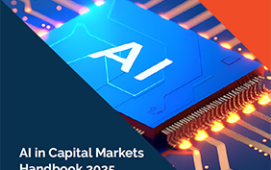
Total portfolio views within investment management platforms are becoming critical to capital markets participants as private and alternative market assets comprise an ever-larger part of institutions’ investment and risk-management strategies.
Having a holistic view enables organisations to unlock the greatest value from their data, a recent A-Team Group Data Management Insight webinar discussed. Aiding in their adoption of total portfolio views has been the evolution of modern data architectures. They have the firepower and agility to process information and provide actionable insights into illiquid markets and assets – all of which offer higher returns and access to which has been a key driver in institutions’ entry into these opaque investment spaces.The importance of holistic views was underlined by a poll of webinar viewers, which found that three-quarters of respondents – all leaders within the capital markets, data and technology sectors – had modernised their systems to a “good” or “great” extent in order to enable such unified portfolio views.
Benefits and Challenges
The webinar – which was attended by Gurprit Singh, Global Head of Data and Analytics at Partners Capital; Catherine Baulamon, Founder and Director of BlackRobin Group; and, Neal Naidoo, Head of IMP Product Development at Rimes Technologies, the event’s sponsor – said total portfolio views within investment management platforms offered substantial benefits, though they come with some challenges.
The technology allows investors to see all assets and liabilities across different accounts and investment types, giving more opportunities to identify opportunities and risks, and better informing portfolio managers’ decision-making processes. A unified view across the portfolio also lowers operational costs by consolidating systems and streamlining reporting and other compliance process through automation.
The webinar, which was entitled “An Agile Approach to Investment Management Platforms for Private Markets and the Total Portfolio View”, also found that companies were prioritising the implementation of enhanced investment management platforms.
Another poll, which asked how important it was to create a complete customer profile view, found that almost three quarters said it was a priority; 14 per cent made it their top priority. No single respondent said they had no plans for such a programme.
Legacy Systems
On a less optimistic note, the webinar noted there are many challenges to implementation. Legacy and fragmented systems, especially prevalent within small and medium-sized organisations, made the integration of full-view platforms costly and difficult.
For those companies, integrating new technologies with long-established business processes and breaking down entrenched silos, such as reliance on Excel-based models, is a substantial undertaking. Tension exists between the latency of obtaining an accurate picture for decision-making and the accuracy of that picture itself. As one speaker highlighted, waiting 90 days to calculate Net Asset Values for investment decisions is not feasible.
The chief issue behind these challenges is the data management uplift required to integrate the inconsistent and hard-to-reach data locked within private and alternative markets. Unbound by the same regulations that cover the disclosure responsibilities of public market participants, the private space has historically been less robust in its data gathering and management processes.
For vendor systems, key requirements include flexibility, cloud-based architectures, modern APIs and robust telemetry. Platforms should facilitate the ingestion of data from diverse sources, enable its standardisation, and support real-time analytics, the panellists said.
Rimes Technologies, as an example of a data company that serves the needs of multi-asset investors, focusses on providing an extensible object model that enables clients to accurately and reliably manage complex data across asset classes.
The role of artificial intelligence and Generative AI is increasingly significant, particularly in addressing the vast quantities of unstructured operational and qualitative data prevalent in private markets. Nevertheless, institutions are advised to select their AI integration points thoughtfully, carefully deciding what capabilities to build, rent, or buy to ensure business continuity and evergreen solutions.
To help overcome these pain points panellists offered a few key approaches. Among them, they recommended identifying and planning how to solve organisations’ key business outcomes desired from a transition to total view investment management. They also suggested prioritising the standardisation of data inputs from the get-go and ensuring a continuous programme of data quality assurance. Each of these would provide for the accuracy of data, a crucial ingredient in investment management optimisation.
Subscribe to our newsletter




